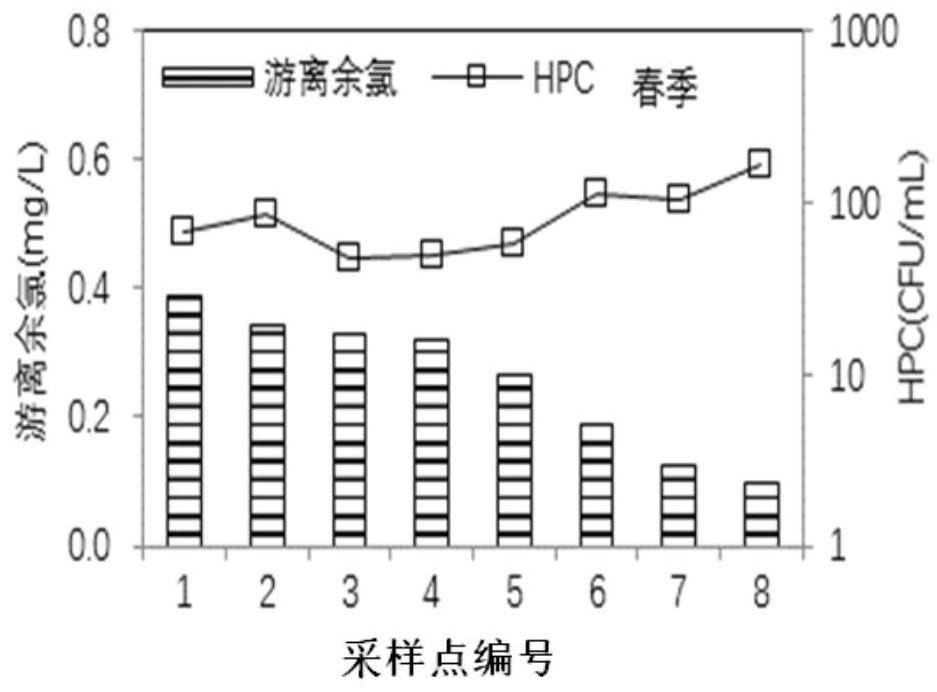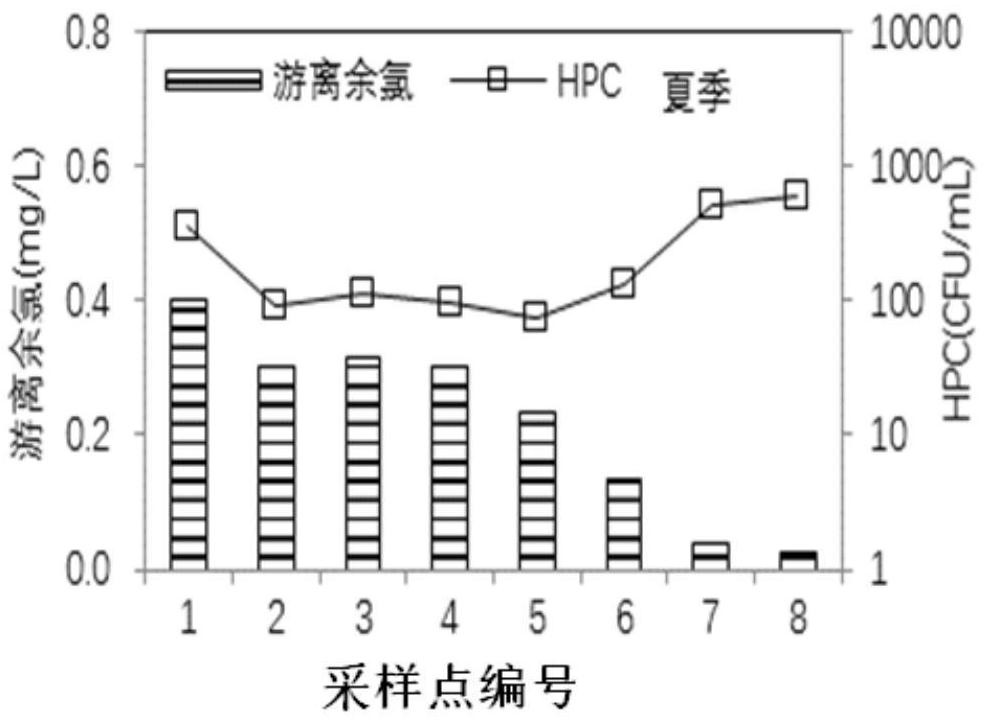Chlorine supplementation method to ensure the biological stability of water quality in long-distance water transmission network
一种生物稳定性、输水管的技术,应用在化学仪器和方法、氧化水/污水处理、水/污泥/污水处理等方向,能够解决余氯浓度低、异养菌落数高等问题,达到避免异味较重、保障生物稳定性的效果
- Summary
- Abstract
- Description
- Claims
- Application Information
AI Technical Summary
Problems solved by technology
Method used
Image
Examples
specific Embodiment approach 1
[0235] Embodiment 1: The chlorine supplement method for ensuring the biological stability of water quality of long-distance water pipeline network in this embodiment is carried out according to the following steps:
[0236] 1. Select the target water pipeline network in the region, analyze the correlation between the residual chlorine and HPC in the water, and determine the minimum concentration limit of residual chlorine in the water that ensures the biological stability of the water quality of the water pipeline network;
[0237] 2. The effluent from the clear water tank of the water intake plant, establish the residual chlorine attenuation model and the DBPs generation and consumption model, and take samples from the sampling port of the water distribution main pipe to detect the water quality to test and optimize the water quality model;
[0238] 3. Taking the filtered water of the water plant as the object, the ammonia nitrogen concentration of the filtered water is measur...
specific Embodiment approach 2
[0241] Embodiment 2: The difference between this embodiment and Embodiment 1 is that the method for establishing the residual chlorine decay model described in step 2 is as follows:
[0242] Take 50mL of water from the clear water tank of the water intake plant and add it to a 50mL colorimetric tube with a stopper to obtain multiple samples, and process different samples to measure the residual chlorine concentration. , the water sample has the water age of tt,
[0243] The following four assumptions are made in establishing the residual chlorine decay model:
[0244] (1) During actual disinfection, the decay reaction of residual chlorine and the generation reaction of DBPs are first-order reactions based on the concentration of residual chlorine;
[0245] (2) There is a fixed ratio s(DBPs) between the production of various DBPs and the consumption of residual chlorine;
[0246] (3) Various DBPs consumption reactions are first-order reactions based on their concentrations; ...
specific Embodiment approach 3
[0257] Embodiment 3: The difference between this embodiment and Embodiment 1 or 2 is that the method for establishing the DBPs generation and consumption model described in step 2 is as follows:
[0258] Accurately measure 50mL of water from the clear water tank of the water plant and add it to a 50mL colorimetric tube with a stopper to obtain multiple samples. At the same time, accurately measure 30mL of water sample and add it to a 40mL Agilent screw-top sample bottle to obtain multiple samples, which can be used for different samples. Add ascorbic acid to the bottle to quench the DBPs generation reaction, and then measure the concentration of various DBPs to obtain the DBPs concentration of water samples of different water ages, and use tt to represent the hydraulic retention time of the clear water tank, because when the water is taken from the water outlet of the clear water tank, the water sample already exists tt water age;
[0259] The following four assumptions are ma...
PUM
 Login to View More
Login to View More Abstract
Description
Claims
Application Information
 Login to View More
Login to View More - R&D
- Intellectual Property
- Life Sciences
- Materials
- Tech Scout
- Unparalleled Data Quality
- Higher Quality Content
- 60% Fewer Hallucinations
Browse by: Latest US Patents, China's latest patents, Technical Efficacy Thesaurus, Application Domain, Technology Topic, Popular Technical Reports.
© 2025 PatSnap. All rights reserved.Legal|Privacy policy|Modern Slavery Act Transparency Statement|Sitemap|About US| Contact US: help@patsnap.com



